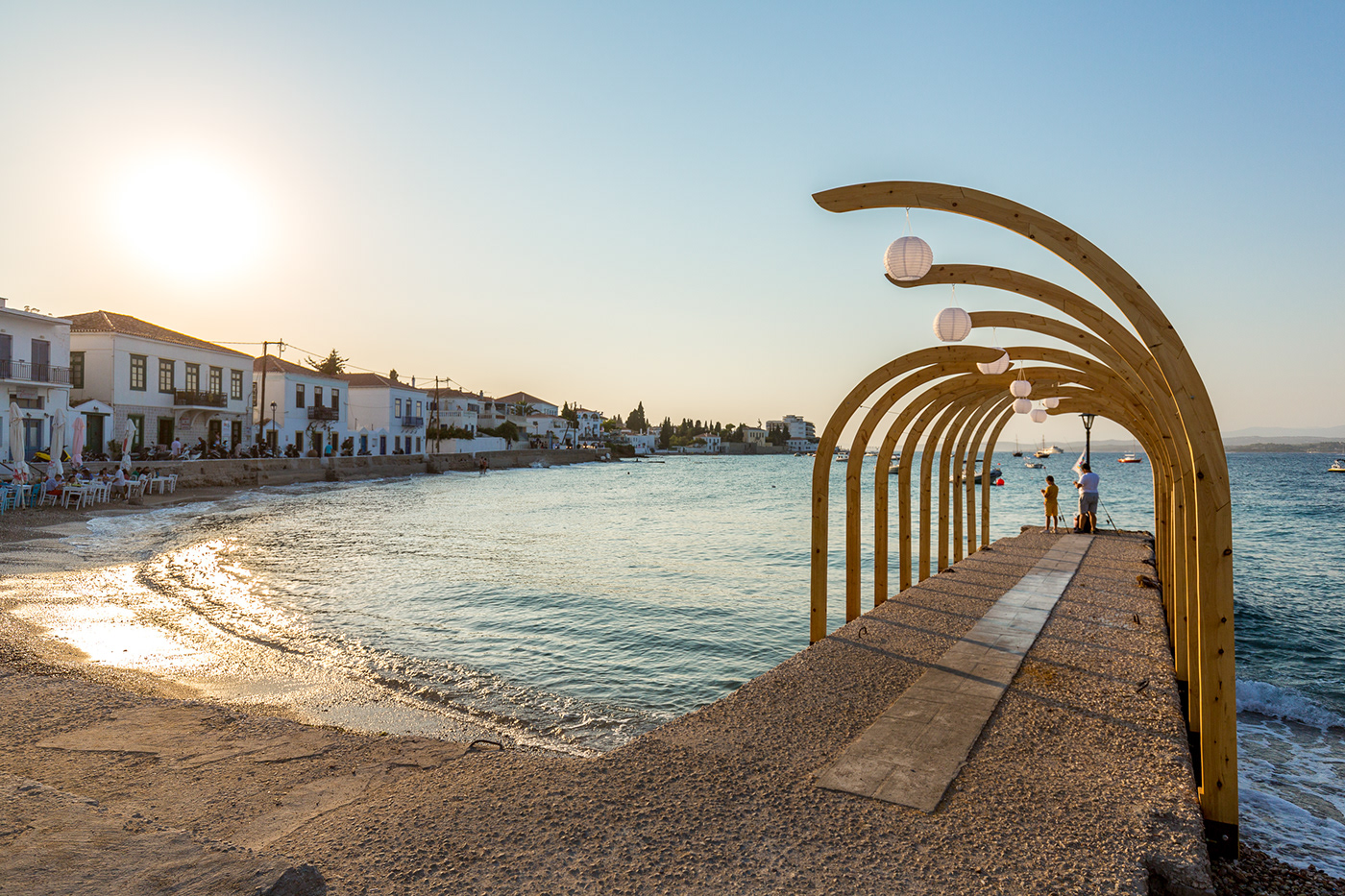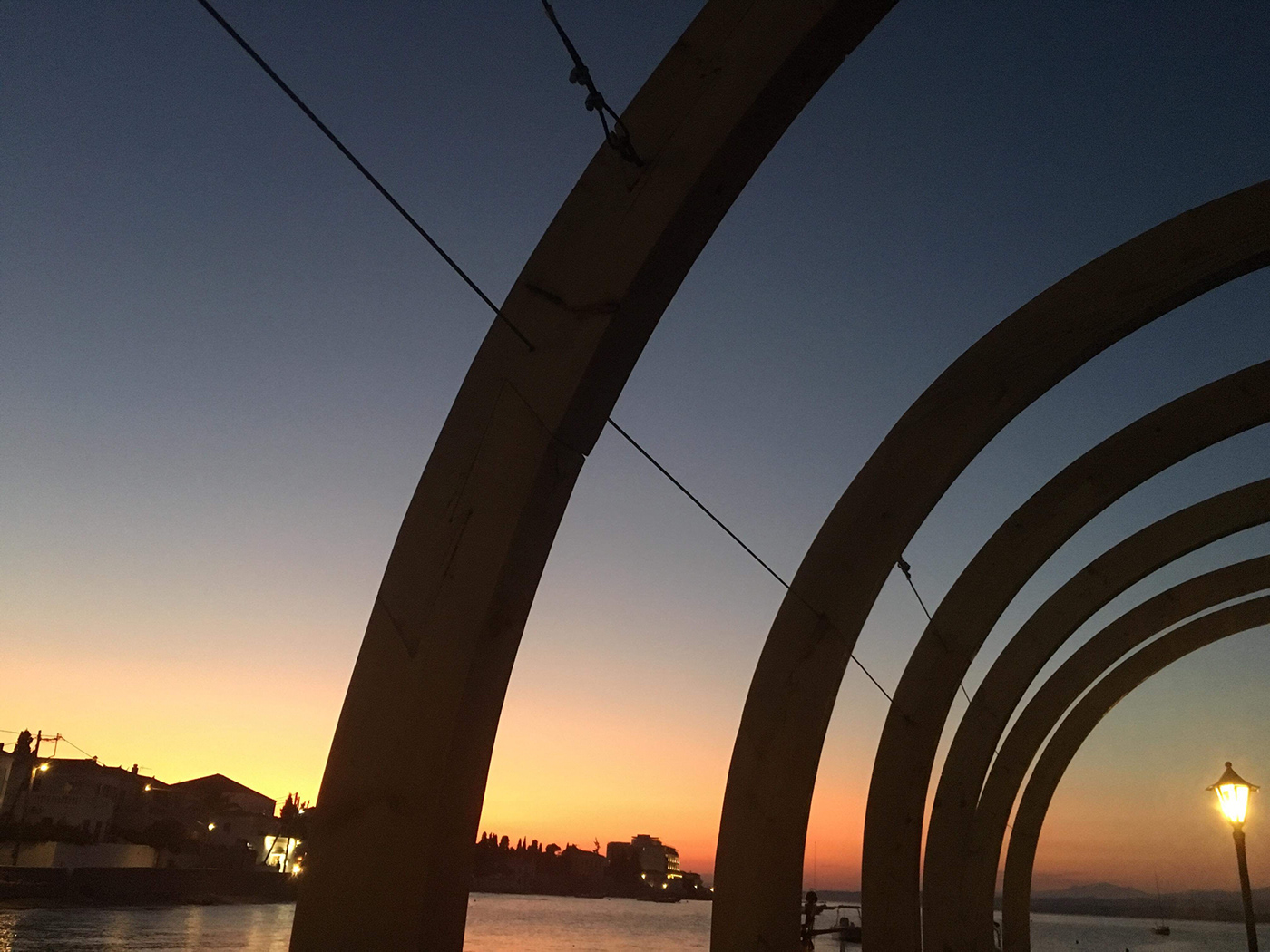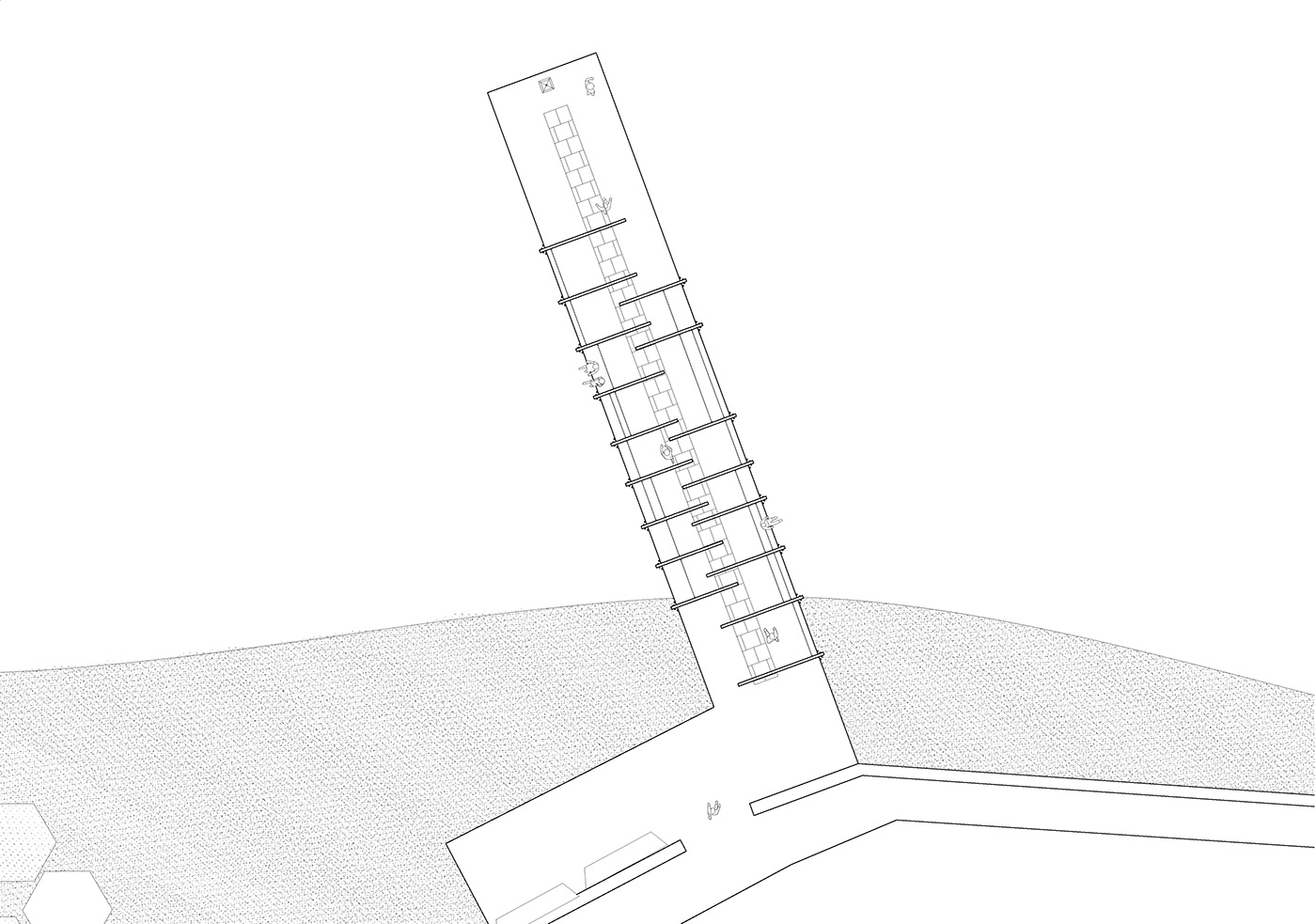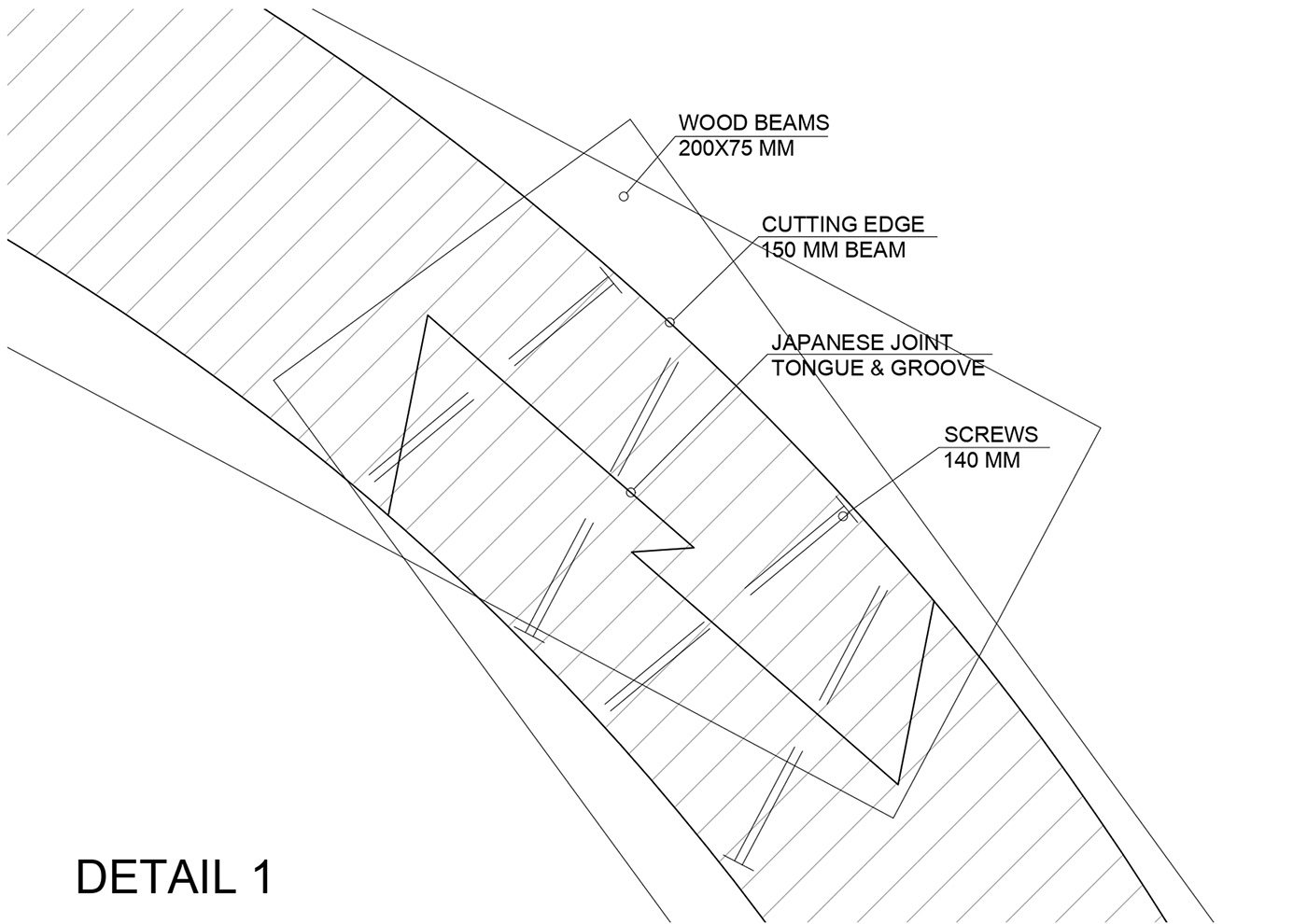Emerging Ruins looks into the culture of Spetses and reinterprets the historic shipbuilding techniques creating a dynamic installation guiding visitors as they approach the island.
Designed by architects Adrián Alfonso and Yacme Mangrané, the project was fabricated by an international group of participants during MEDS Workshop 2019 over the course of two weeks in Spetses, Greece. Nektarios Kleissas, a local shipbuilder, mentored and guided the participants during the manufacturing phase with his knowledge of various traditional building methods.
This passage of emerging ruins marks the first point that tourists and inhabitants experience when arriving to the island, but also the last one when they leave, reminding them of the importance of the craft and tradition that have influenced Spetses throughout its history.

A centrally located stone pier was chosen as the project site, due to its position as a main thoroughfare for water taxis, proximity to local historic sites, and strong relation to the cultural identity of Spetses.

Traditional ribs of a wood boat are reimagined a contemporary way, creating an island focal point from this commonly used pier. The classic shape is repurposed by inverting the wooden rib form to create a skyline of "emerging ruins" from the surrounding sea. The installation not only adds visual interest to the pier's water taxi stand but is a nod to the local shipbuilding tradition still prevalent on the island, that also catches the beauty of the maritime landscape through a form of undulating waves.
The intent of the structure is to guide users through the frame of a tunnel, mimicking the waves of the surrounding water. Expanding and compressing in height, the form guides users on a path from land to sea and vice versa. The tunnel is comprised of seventeen vertical wood rods with six varying arc lengths dispersed along the path.








The wood rods were designed and fabricated with the influence of traditional shipbuilding craft, an art that is losing its popularity with the advent of technology. The six varying arc lengths are composed of five different wood pieces joined together with a tongue and groove technique, fitting seamlessly within one another. The wood rods are affixed to either side of the pier with coated steel angles. To provide stability from the wind blowing from the sea, galvanized steel cables connect the rods distributing the force throughout the structure.







Solar panel lamps are affixed to the wood rods, aligned to the existing lamp marking the taxi stand, and illuminate the pier to guide the island visitors at all hours in an intimate atmosphere.

Site Plan

Top View

Front Section

Longitudinal Elevation

Isometric View


Pictures credits:
Vlad Georgiev
Jan von der Heyde
Tutors:
Adrián Alfonso (Spain)
Yacme Mangrané (Spain)
Adrián Alfonso (Spain)
Yacme Mangrané (Spain)
Participants:
1. Eduardo Cervera (Spain)
2. Mariam Arshakyan (Armenia)
3. Dmitriy Ilin (Russia)
4. Perla Nassar (Lebanon)
5. Jan Jabłoński (Poland)
6. Blagoje Cabrilo (Montenegro)
7. Nuria Cánovas (Spain)
8. Đorđe Doderović (Montenegro)
9. Christina Tasouka (Greece)
10. Nadia Corsetti (Canada)
11. Emy Sofia Rebecca Edin (Sweden)
12. Lara Rutten (Belgium)
13. Victorine Lefebvre (France)
14. Oumaima Iouafi (Algeria)
15. Jure Korosec (Slovenia)
1. Eduardo Cervera (Spain)
2. Mariam Arshakyan (Armenia)
3. Dmitriy Ilin (Russia)
4. Perla Nassar (Lebanon)
5. Jan Jabłoński (Poland)
6. Blagoje Cabrilo (Montenegro)
7. Nuria Cánovas (Spain)
8. Đorđe Doderović (Montenegro)
9. Christina Tasouka (Greece)
10. Nadia Corsetti (Canada)
11. Emy Sofia Rebecca Edin (Sweden)
12. Lara Rutten (Belgium)
13. Victorine Lefebvre (France)
14. Oumaima Iouafi (Algeria)
15. Jure Korosec (Slovenia)




